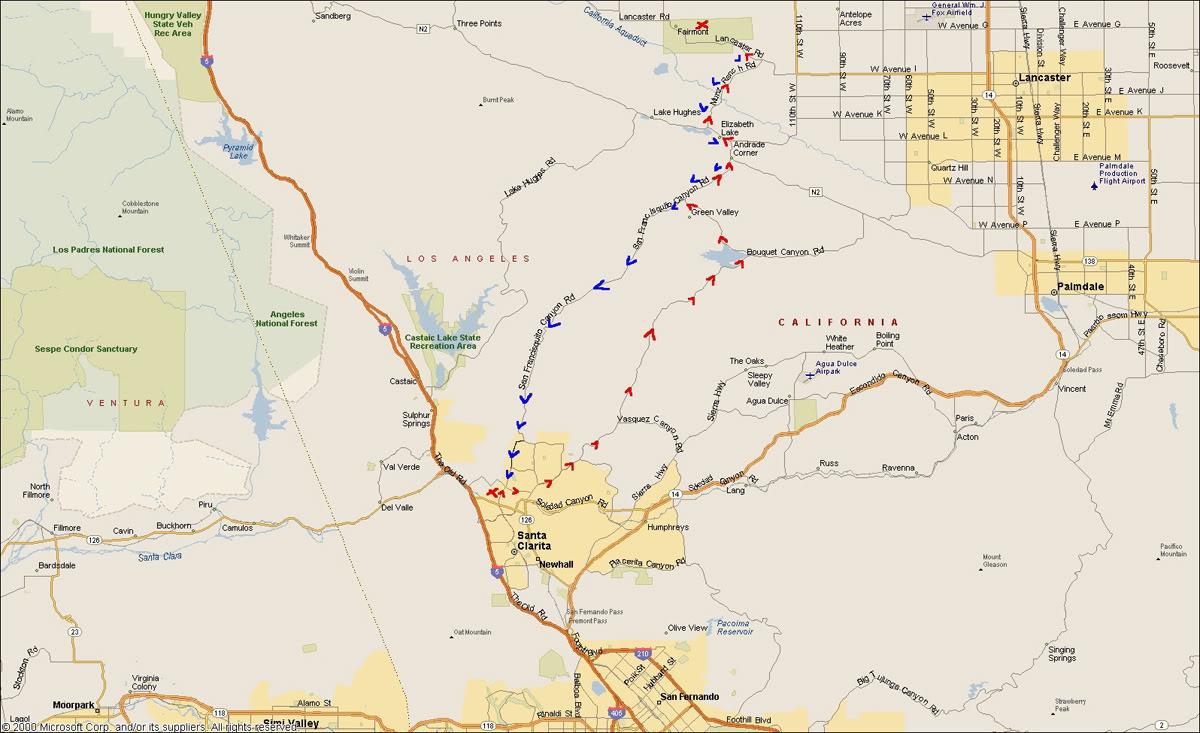You must be logged in to rate content!
6 minute(s) of a 612 minute read
7-16-2013
7-16-2013
I was asked in PM about famous Mulholland Drive for a leisure Porsche drive in Southern Cal and thought I should share my ideas here in case others are interested.
Fabled Mulholland Drive is actually not my favorite as it is frequently relatively crowded with other drivers. There are many officers eager to hand out tickets, especially on weekends. You are almost guaranteed to get a ticket for speeding here on weekends. Because it is mostly mountain and canyon roads, one has to be careful of blind spots and of other drivers.
The only good things about Mulholland Dr is the scenery is absolutely spectacular (you look down on Malibu and the Pacific Ocean at times), and of course, the name. You like to drive through just so to see the setting for those storied Mulholland road races in the 60's. There were 911's made specifically to race Mulholland back then (stiff as helll, low, wide track, etc.).
My favorite road course in Southern Cal is actually the Lake Hughes area. On a weekday it is deserted; even on weekend it is mostly empty once you are out there around the Antelope Valley California Poppy Reserve (worth a visit in blooming season!!) area. This type of road course, combination mountain/canyon/desert, is what makes California fantastic for Porsche owners.
The drive below is from a PCA drive that we organized in the past. I love this course because it is a combination of twisty canyon roads (careful, canyon roads mean blind corners) and wide open desert roads with great vision ahead. On a weekday particularly the northern 2/3 end of the loop, you are going to be all by yourself for miles around. If I get out from work early and would like to enjoy the scenery, this is where I drive, by myself mostly (don't like convoy) and always safely and within the legal limits of course. Anyone else has any favorite road, you are welcome to post your map here.

7-17-2013
Yes, this is a good one that I have not been to, and another one is Ortega Freeway 74 in Orange County.
What I like about the Lake Hughes/California Poppy Reserve route I post above is that it is not well known at all and therefore practically empty on weekdays, and it is not all canyon/mountain roads, which would have a lot of blind corners by definition (the mountain slope always blocks one side of the road). Calif. Poppy Route has combination of both canyon and open desert roads with great visibility (the key for me), like this:

^^^Sayajin, sorry, I think I caused a confusion with my writing. That was not a recommendation for -1.2 front, -3 rear camber setting. I was merely noting that the max you could achieve with stock components is max -1.2 front, max -3 rear. In general, camber setting examples that I have seen from various cars tend to be close to each other, with rear about -.5 more than front. -1.2 front/-3 rear has too much discrepancy front to rear.
As far as "correct" camber settings, it depends on what you are doing. Before I tell you my reasoning, maybe I should explain why negative camber is needed. During a turn, the outside suspension compresses (when you turn left, this means the right suspension), as the the right suspension compresses, it gains positive camber as a result of the suspension design (McPherson Strut in particular), as it gains positive camber, it loses traction as wheel surface is no longer parallel to surface. The negative camber is there to negate this gain in positive camber and maintain max wheel contact with road. As such, this is the first thing to remember: high negative camber is used for better and faster *cornering*, it is actually bad for straight-line performance, such as tire wear, braking, and acceleration.
Use low negative camber for street driving: I would only recommend that you try -1.2 front/-1.6 rear for now, then in a few months, check the tire wear. If your tire's wear is even across from inside to out, then that means you are OK. If your tire wears more on the outside, then congratulations, you are driving with good speed and the negative camber should be more. Conversely, if your tire wears more on the inside then negative camber should be less.
Use high negative camber for track junkies: TT Surgeon/VID/E55AMG/etc. could chime in here, but the settings here are indeed in the -2 range and I am sure they could give you some recommendations (which will all vary depending on their speed and suspension setup). Why more camber at the track? These guys are speeding into corners with exceedingly high speed, exceedingly high speed means exceedingly more compression, exceedingly more compression means more positive camber, more positive camber means you have to negate it with higher negative camber.
Outside of the track, I can't recall that any tuner/expert ever recommends camber in the 2 range, unless you are robbing a bank in the middle of a canyon road. Kidding aside, on a road coarse, we rarely get to the speed that they do in a big track for example, and high negative camber is not necessary.
I assume you have the front lower control arm right? You could try more than -1.2 and see how you like it, but do keep in mind it is a trade-off. Better cornering means worse straightline performance. And unless you take corners with very high speed, it's actually worse for handling. I drive mostly street and weekend canyon road, and my tires have been completely even across at -1.2 and -1.6, therefore the tuner has never increased camber further.